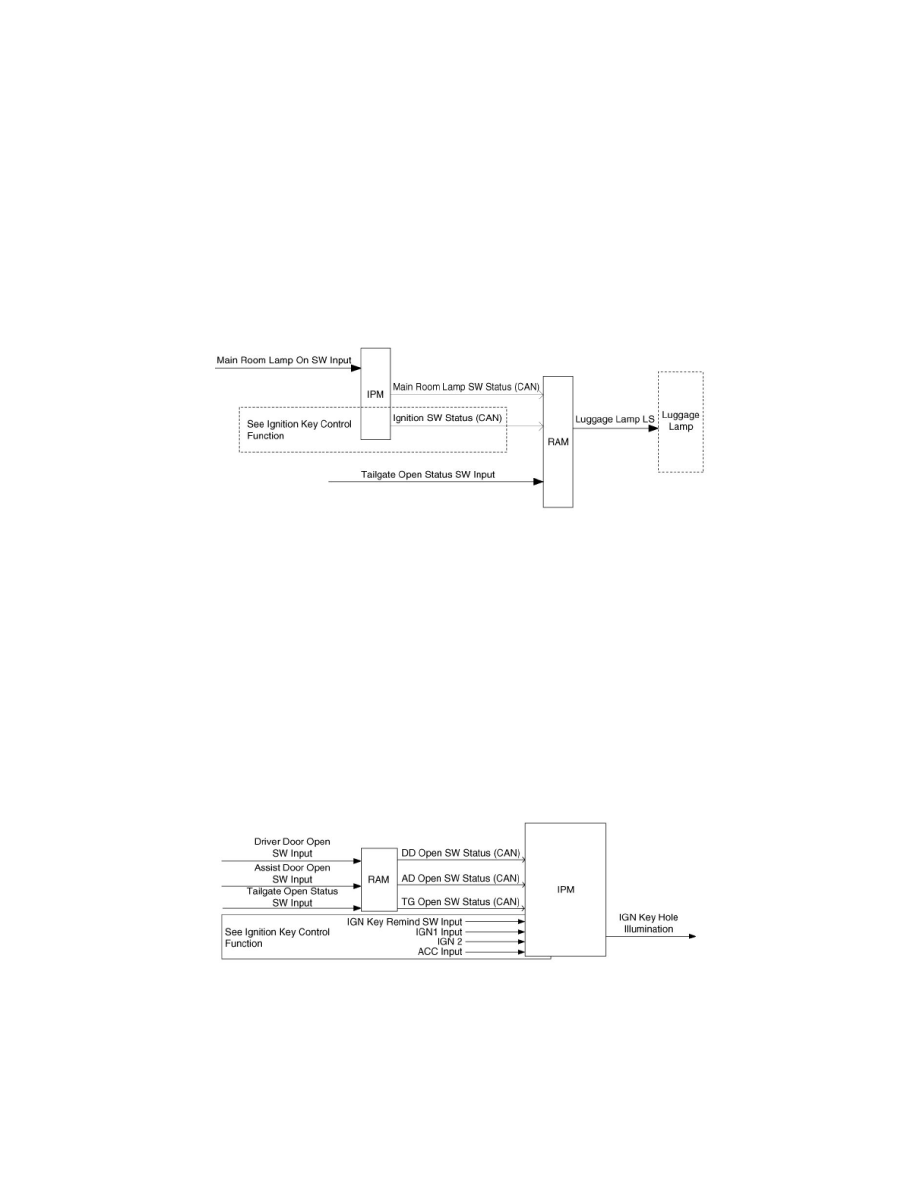Borrego 4WD V6-3.8L (2009)

Light Decay definition:
"Decayed OFF" corresponds to an illumination level decay of 2 +/- 0.2 seconds after door close.
Start level at door close is 75% of full illumination level (+/- 10% due to hardware dispersion), and then linear diminishing for 2 +/- 0.2 seconds with a
resolution of more than 32 steps, till 0.
Luggage Lamps
Description
The vehicle is equipped with a Luggage Lamp of which the low side is driven by the RAM, and the control logic depends on:
Tailgate status (RAM input)
The ignition key position (managed by the IPM and signal transmitted to the RAM).
The Main Room Lamp switch (variation dependent equipment), which is a common control for the interior light.
No diagnostic (problem detection) is done on the Luggage Lamps.
Functional Diagram
2 of 3
Key Hole Illumination
Description
This function provides an illumination of the ignition key cylinder to help the driver inserting the key.
The key cylinder illumination depends on:
The driver and assist door status (open or close) provided by the RAM,
The ignition key position (off, acc, run, start) managed by the IPM,
Ignition key reminder (inserted or not) managed by the IPM,
The Burglar Alarm state managed by the IPM (depending on vehicle variation),
Functional Diagram
IPM
Description
The keyhole illumination is switched on when receiving Driver door open switch status or Assist door open switch status CAN signals with OPEN value.
The keyhole illumination is switched off 30s after Driver door open switch status or Assist door open switch status CAN signals were received with
value CLOSE.
When the ignition key switch status is RUN or START, the keyhole illumination is OFF.
When the ignition key is in OFF or ACC position, and if any transition from CLOSED to OPEN is detected on the Driver or Assist door, then the key
